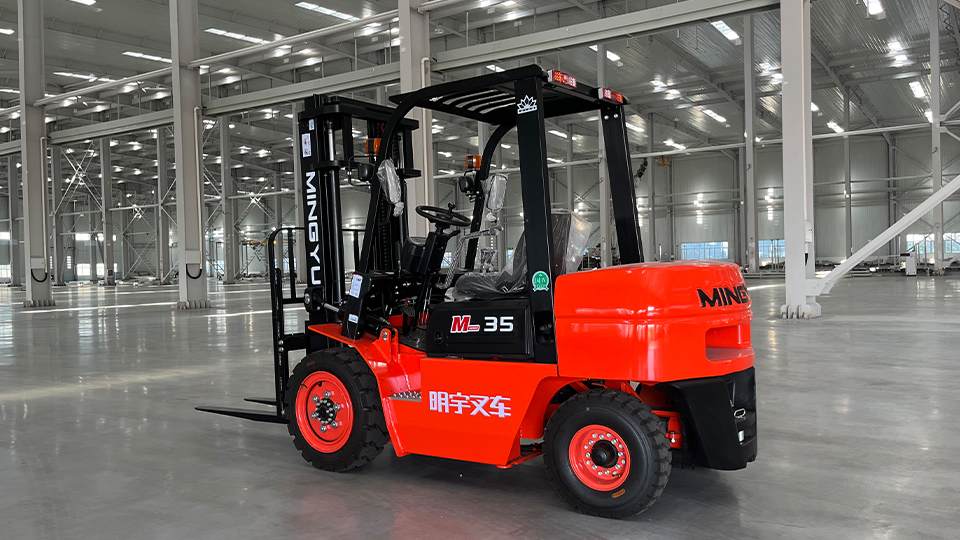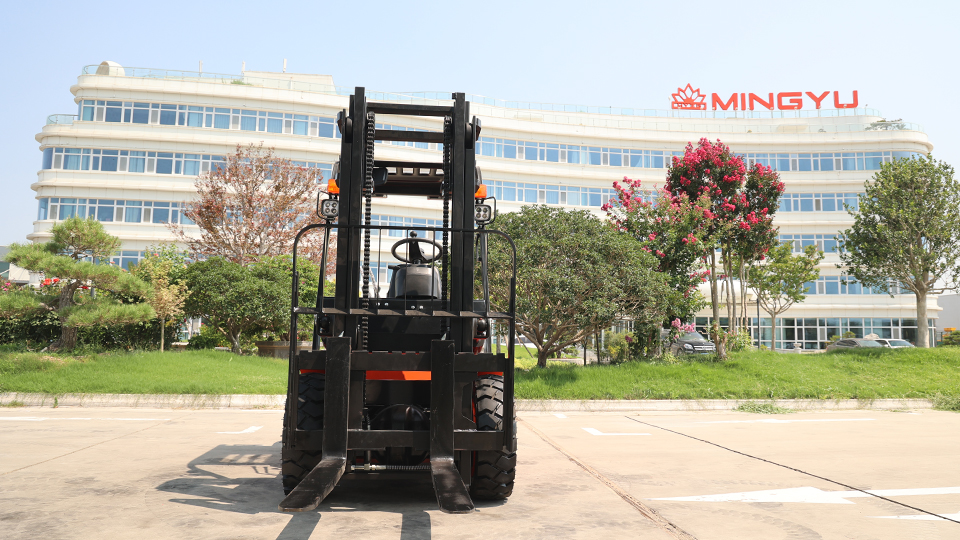
The Taxonomy of Torque: Deconstructing the Seven Classes of Powered Industrial Trucks (PITs)
When the term "forklift" is used casually, it typically conjures an image of a standard, four-wheeled counterbalance truck. However, the world of material handling is governed by a precise and diverse taxonomy of machines, officially known as Powered Industrial Trucks (PITs).1 For the purposes of safety, training, and regulatory compliance (specifically OSHA Standard 29 CFR 1910.178), all PITs are categorized into seven distinct classes.2
Understanding these seven classes is not just academic; it is the fundamental basis for safe operation, correct equipment selection, and compliant operator certification. An operator must be specifically trained and certified for the class (or classes) of equipment they will be using.
The classification system is primarily dictated by three core design and functional criteria:
Power Source: Electric motor or Internal Combustion Engine (ICE).3
Tire Type: Cushion (solid rubber) or Pneumatic (air or foam filled).4
Application/Maneuverability: Standard rider, narrow aisle, or rough terrain.
The following is a technical deconstruction of the seven classes of Powered Industrial Trucks.

Part I: The Electric Trilogy (Classes I, II, & III)
The first three classes are defined by their electric power source, making them ideal for indoor environments where emissions, noise, and air quality are primary concerns (e.g., food storage, pharmaceutical manufacturing, and general warehousing).5
Class I: Electric Motor Rider Trucks
The workhorses of the indoor material handling world, Class I trucks are characterized by their seated or standing operator position and electric power.6
Design and Function: These are traditional counterbalance forklifts, utilizing a heavy battery pack not only for propulsion but also as the primary counterweight to stabilize the load lifted by the forks. They come in both three-wheel (highly maneuverable) and four-wheel (more stable) configurations.7
Power Source: Lead-acid, Lithium-ion, or other industrial batteries.8 They generate zero tailpipe emissions, making them crucial for air quality compliance.
Tire Type: Typically equipped with cushion tires for smooth, flat indoor surfaces.9
Applications: Loading/unloading tractor-trailers, long runs through warehouses, and high-capacity stacking where clean air is essential.
Sub-Types (Examples): Stand-up Counterbalanced Rider, Sit-down Rider (3-wheel and 4-wheel).10
Class II: Electric Motor Narrow Aisle Trucks
Class II is the domain of specialization and spatial efficiency.11 These trucks are engineered specifically to maximize storage density by operating in extremely narrow aisles.12
Design and Function: Unlike standard counterbalance trucks, these units often employ complex mechanisms—such as telescoping masts or articulating forks—to retrieve and store pallets from their side without needing to turn the entire truck within the aisle.
Power Source: Electric.
Tire Type: Generally cushion, small in diameter for minimal turning radius.
Distinguishing Feature: Operator position is typically standing, often with specialized controls for precise lateral and vertical movement. These trucks have significantly higher complexity in their stability triangle due to their high-lifting and narrow profile.
Applications: High-density storage warehouses, large distribution centers, and very narrow aisle (VNA) systems.13
Sub-Types (Examples): Reach Trucks, Order Pickers (or Order Selectors), Turret Trucks, and Side Loaders.14
Class III: Electric Motor Hand Trucks or Hand/Rider Trucks
This class comprises the basic, low-lift equipment designed for horizontal movement and staging, rarely lifting a load more than a few inches off the floor. They are highly common on loading docks and in retail stock rooms.15
Design and Function: Controlled via a steering tiller (or handle).16 The operator either walks with the truck ("Walkie")17 or stands on a platform ("Rider" or "End-Rider"). The walkie variants are exceptionally low-impact and safe for short-distance transport.

Power Source: Electric, generally utilizing compact industrial batteries.18
Tire Type: Load wheels are usually solid poly or rubber.
Distinguishing Feature: The load weight acts as the counterbalance for stability, but due to low lifting heights, the stability principles are less complex than in Classes I and II.
Applications: Unloading trailers, moving pallets to a staging area, and handling smaller retail inventory in back rooms.19
Sub-Types (Examples): Electric Pallet Jacks, Walkie Stackers, Low-Lift Pallet Trucks, and End-Rider Pallet Trucks.20
Part II: The Combustion Engine Division (Classes IV & V)
Classes IV and V are the Internal Combustion Engine (ICE) counterparts to Class I, differentiated primarily by their fuel source (Propane, Gasoline, Diesel, or CNG) and their intended operating environment, which is determined by the tires.21
Class IV: Internal Combustion Engine Trucks (Cushion Tires)
Class IV trucks are sit-down counterbalance units powered by ICE, but they are designed strictly for indoor or smooth surface use.22
Design and Function: Sit-down counterbalance design. The engine compartment and frame serve as the counterweight.
Power Source: Internal Combustion Engine (LPG is the most common fuel due to lower relative emissions than gasoline/diesel, but still requires strict ventilation compliance).23
Tire Type: Cushion (Solid) Tires.24 These are solid rubber tires pressed directly onto the wheel, offering superior traction and a firm, low ride height on smooth concrete or asphalt. Their low ground clearance makes them unsuitable for outdoor use or debris-covered floors.
Applications: Heavy-duty indoor manufacturing, printing, or warehousing where air quality is manageable via ventilation, and lifting power/speed is critical.
Class V: Internal Combustion Engine Trucks (Pneumatic Tires)
Class V trucks are nearly identical to Class IV in terms of function and power source, but their choice of tires unlocks the outdoor world.25
Design and Function: Sit-down counterbalance design, powered by an ICE. The most versatile and widely recognized "forklift" type in the world.
Power Source: Internal Combustion Engine (LPG, Diesel, Gasoline, or CNG).26 Diesel is common for high-capacity outdoor use.
Tire Type: Pneumatic (Air-Filled) Tires. These tires are larger, wider, and have deep treads, providing the flotation and shock absorption necessary to operate effectively on rough, uneven, or loose terrain (gravel, dirt, asphalt).27
Applications: Construction sites, lumberyards, railyards, outdoor storage facilities, and any operation that requires transitioning frequently between indoor (well-paved) and outdoor surfaces.
Part III: The Specialized Final Classes (Classes VI & VII)
The final two classes diverge significantly, serving highly niche, yet essential, functions within the material handling ecosystem.
Class VI: Electric and Internal Combustion Engine Tractors (Tuggers)
Class VI trucks are the tow trucks of the industrial world; they are designed exclusively for horizontal movement and do not lift a load with forks.28
Design and Function: These are tow tractors or "tuggers."29 Their primary mechanism is a drawbar pull for towing trailers, carts, and baggage trains. They feature a low center of gravity and high torque at low speeds to initiate movement of extremely heavy, wheeled loads.
Power Source: Available in both Electric (for quiet, clean indoor towing, like assembly lines or airport baggage) and Internal Combustion Engine (for long-distance or outdoor yard transport).30
Tire Type: Usually cushion or small pneumatic, depending on the environment.
Distinguishing Feature: Training for this class focuses entirely on hitching, load dynamics while towing, and safely maneuvering a long, articulated load through a facility.
Applications: Airports (baggage trains), large manufacturing facilities (assembly line feeding), and distribution centers (towing supply carts).31
Class VII: Rough Terrain Forklift Trucks
Class VII is defined entirely by its environment: extreme, unimproved outdoor surfaces.32 These machines are not merely forklifts with tougher tires; they are industrial vehicles built on rugged, often four-wheel-drive, construction-grade chassis.
Design and Function: Specifically engineered for rugged performance, high ground clearance, and enhanced stability on slopes and uneven ground.33
Vertical Mast Type: Similar to a traditional counterbalance, but built on a heavy-duty chassis with large, lugged tires.
Variable Reach Type (Telehandlers): These are the most common Class VII units. They feature a boom that extends forward and upward, allowing for the placement of loads far from the chassis (e.g., lifting materials to the second floor of a construction project).34
Power Source: Almost exclusively high-torque Diesel engines.
Tire Type: Massive, large-diameter, highly durable pneumatic or foam-filled tires with deep, aggressive treads.
Applications: Construction sites, logging, mining, agricultural fields, and any site with unpaved or gravely surfaces.
Compliance Note: While telehandlers are included here, their operation in construction often falls under separate crane and derrick standards, adding layers of complexity to operator certification.
The Crux of Certification: Why Class Matters
The separation of forklifts into these seven distinct classes is the foundation of the mandatory operator certification process.35 OSHA regulation $1910.178(l)(3)$ states that operator training must include instruction on “the type of truck the operator will be authorized to operate.”
This means:
Certification is Class-Specific: Certification on a Class V (ICE Pneumatic) forklift does not authorize an operator to use a Class II (Narrow Aisle Reach Truck). The stability, controls, visibility, and hazards are completely different.
Refresher Training Trigger: If an operator is assigned to operate a different class of powered industrial truck than they were originally trained on, refresher training and a new practical evaluation are legally required.
Stability Principles Change: Each class operates under unique stability principles. The electric battery serving as a counterweight in Class I, the outriggers providing stability in a Class II Reach Truck, and the chassis leveling required for a Class VII Telehandler are all distinct technical concepts that must be taught and demonstrated.
In conclusion, while the industrial truck may look like a simple lifter, its regulatory classification defines its power, its environment, its stability, and ultimately, the specific technical knowledge and training required for an operator to legally and safely earn their certification. The answer to "how many classes of forklifts are there?" is a definitive seven, and each represents a unique technical challenge and operational profile in the material handling world.
Name: selena
Mobile:+86-13176910558
Tel:+86-0535-2090977
Whatsapp:8613181602336
Email:vip@mingyuforklift.com
Add:Xiaqiu Town, Laizhou, Yantai City, Shandong Province, China